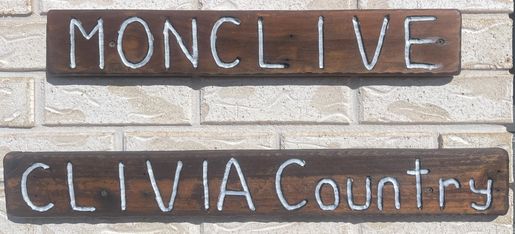Clivia Postage Stamps
Clivia Postage Stamps
Clivia Postage Stamps
Clivia Postage Stamps
Clivia Postage Stamps
Clivia Postage Stamps
Clivia Postage Stamps
C. nobilis
C. gardenii
C. nobilis

Illustration 1: Clivia nobilis. The depicted plant derives from the Standerwick Nursery in the environs of Port Alfred, and is a clone from the farm where the nursery is located. The plant is representative of the forest form of the species, with thinner, ranging roots and narrower leaves than the dune forest form, which has thicker, asparagus-like buttress roots and shorter, broader leaves. The coastal form also seems to produce redder blooms than the inland forest forms, which may be indicative of different pollinators, or visibility to pollinators under differing light conditions. We remain particularly ignorant on these matters
C. miniata
C. gardenii
C. nobilis

Illustration 2: Clivia miniata. The plant represented was a late blooming specimen in the collection of the University of Pretoria. The courtyard of what was once the Faculty of Agriculture (now the Department of Consumer Sciences) has a fine collection of what appear to be the Oribi Gorge form of C. miniata, since they are particularly large plants with fine umbels ranging from apricot to orange-red flowers, and obviously long established in their position in the garden. The plant depicted is unusual in that the colour is laid down as speckles on a white and yellow background. It has a typical ’wild’ arrangement of tepals, separate and dainty.
C. gardenii
C. gardenii
C. caulescens

Illustration 3: Clivia gardenii. Gill depicts a plant from her own collection, growing in her garden, but bought years back when the Northern Clivia Club Show was held at the National Botanical Gardens, Pretoria. The peduncle is cyanin suffused, giving it a purple red hue, a characteristic found in varieties of this species, and shared with C. mirabilis. Flower colours can range from pale yellow through to purple red.
C. caulescens
C. caulescens
C. caulescens

Illustration 4: Clivia caulescens. The plant and flower depicted are not one. The plant is from the nursery trade in White River and is a habitat form of the Lowveld scarp. It shows the characteristic caul or stem from which the species gets its name (see the accompanying article of RA Dyer). The flower shown is from a specimen in the collection of Fred van Niekerk. The flowers of the species range in colour from good reds with characteristic green lips through to a yellow form (see accompanying Auction catalogue for examples of varieties.
C. mirabilis
C. caulescens
C. mirabilis

Illustration 5: Clivia mirabilis. Gill had the type plant sent up from Kirstenbosch in order to represent it. She was thwarted in her regime of working from live material in that it was not in bloom, and so had to resort to photographs of habitat material for painting the blooms and seed umbel. It is interesting that we have had released to the market almost twice as many plants as are estimated to be growing in habitat. It is probably true of most of the species that there are more plants in cultivation that in habitat.
C. robusta
C. caulescens
C. mirabilis

Illustration 6: Clivia robusta. The form depicted is that deposited by Fanie Venter in the Pretoria Botanical Gardens in the 1970s and used in Flowering Plants to incorrectly depict Clivia nobilis. The plants stood near the entrance in large clumps in the shade bearing this label, but were moved to the shade house once we alerted the curator to their actual identity. They are an orange flowered form of the larger variety of the species, which Fred van Niekerk has christened ‘Maxima’. It would seem that the species status of these plants is still contentious but their association with a swamp habitat cannot be contested, resulting in them producing buttress-like roots from the stem as it rises in growth above the water line.
Clivia Postage Collection
Clivia Postage Collection
Clivia Postage Collection

Copyright © 2025 Monclive Clivias - All Rights Reserved.
Powered by Clivia Country

Welcome to Clivia Country